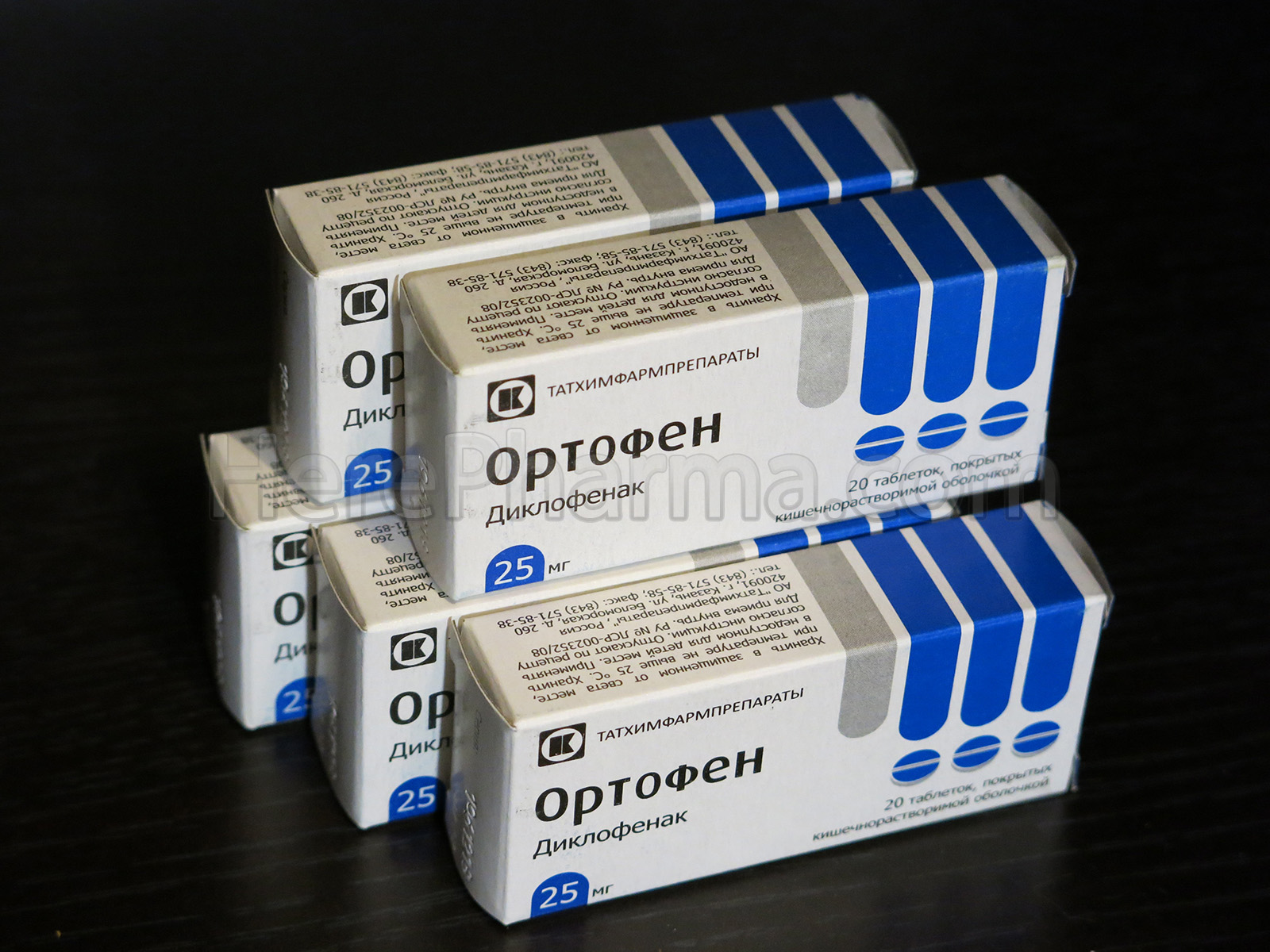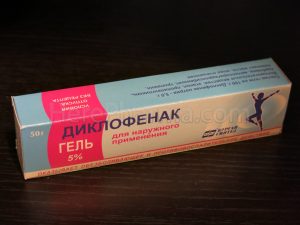$28.00
Description
Diclofenac 25mg 100 tablets
Pharmacological action
NSAIDs, a derivative of phenylacetic acid. It has a pronounced anti-inflammatory, analgesic and moderate antipyretic effect. The mechanism of action is associated with inhibition of COX activity – the main enzyme metabolism of arachidonic acid, which is a precursor of prostaglandins, which play an important role in the pathogenesis of inflammation, pain and fever. Analgesic effect is due to two mechanisms: peripheral (indirectly, through the suppression of prostaglandin synthesis) and Central (by inhibiting the synthesis of prostaglandins in the Central and peripheral nervous system).
In vitro in concentrations equivalent to those achieved in the treatment of patients does not inhibit the biosynthesis of cartilage proteoglycans.
In rheumatic diseases reduces pain in the joints at rest and when moving, as well as morning stiffness and swelling of the joints, increases the volume of movements. Reduces post-traumatic and postoperative pain, as well as inflammatory edema.
In post-traumatic and postoperative inflammatory phenomena quickly relieves pain (occurring both at rest and when moving), reduces inflammatory edema and swelling of the postoperative wound.
Inhibits platelet aggregation. With long-term use has a desensitizing effect.
Pharmacokinetics
After ingestion absorbed from the gastrointestinal tract. Eating slows the rate of absorption, the degree of absorption does not change. About 50% of the active substance is metabolized during the “first passage” through the liver. With rectal administration absorption is slower. The time to achieve Cmax in plasma after oral administration is 2-4 h depending on the dosage form, after rectal administration – 1 h,/m administration – 20 min.the Concentration of the active substance in the plasma is in linear dependence on the magnitude of the dose used.
Not cumulating. Plasma protein binding is 99.7% (mainly albumin). It penetrates into the synovial fluid, Cmax is achieved 2-4 hours later than in plasma.
It is largely metabolized to form several metabolites, among which two are pharmacologically active, but to a lesser extent than diclofenac.
Systemic clearance of the active substance is about 263 ml/min. T1/2 from plasma is 1-2 h, from synovial fluid – 3-6 h. Approximately 60% of the dose was excreted as metabolites by the kidneys, less than 1% is excreted in the urine unchanged, the remainder is excreted as metabolites in the bile.
Indications
Inflammatory and degenerative diseases of the musculoskeletal system, including rheumatoid, juvenile, chronic arthritis; ankylosing spondylitis and other spondylarthropathies; osteoarthritis; gout arthritis; bursitis, tenosynovitis; pain syndrome from the spine (lumbago, ischialgia, ossalgia, neuralgia, myalgia, arthralgia, radiculitis); post-traumatic postoperative pain syndrome, accompanied by inflammation (for example, in dentistry and orthopedics); algodismenorrhea; inflammatory processes in the pelvis (including adnexitis); infectious and inflammatory diseases of ENT organs with severe pain syndrome (as part of complex therapy): pharyngitis, tonsillitis, otitis media.
Isolated fever is not an indication for use of the drug.
The drug is intended for symptomatic therapy, reducing pain and inflammation at the time of use, the progression of the disease is not affected.
Dosage regimen
The dose is selected individually, it is recommended to use the drug in the minimum effective dose, if possible with the shortest period of treatment.
For oral and rectal use
Adults
When taken orally in the form of tablets of normal duration of action or rectally in the form of suppositories, the recommended initial dose is 100-150 mg/day. In relatively mild cases, as well as for long-term therapy, 75-100 mg/day is enough. The daily dose should be divided into several doses.
When taken in the form of tablets prolonged action recommended initial dose-100 mg 1 time / day. The same daily dose is used for moderate symptoms, as well as for long-term therapy. In cases where the symptoms of the disease are most pronounced at night or in the morning, prolonged tablets
actions are preferably taken at night.
To relieve night pain or morning stiffness in addition to taking the drug during the day, diclofenac is prescribed in the form of rectal suppositories before bedtime; in this case, the total daily dose should not exceed 150 mg.
With primary dysmenorrhea, the daily dose is selected individually; it is usually 50-150 mg.the Initial dose should be 50-100 mg; if necessary, within a few menstrual cycles, it can be increased to 150 mg/day. The drug should be started when the first symptoms appear. Depending on the dynamics of clinical symptoms, treatment can be continued for several days.
In elderly patients (65 years and older) correction of the initial dose is not required.
In weakened patients, patients with low body weight is recommended to adhere to the minimum dose.
It should be used with extreme caution in patients with diseases of the cardiovascular system (including uncontrolled hypertension) or high risk of cardiovascular disease. If necessary, long-term therapy (more than 4 weeks) in such patients, the drug should be used in a daily dose not exceeding 100 mg.
Children 1 year and older
The drug is prescribed at a dose of 0.5-2 mg / kg body weight / day (2-3 admission, depending on the severity of the disease). For the treatment of rheumatoid arthritis, the daily dose can be increased to a maximum of 3 mg/kg (in several doses). The maximum daily dose is 150 mg.
The drug in the form of long-acting tablets should not be used in children and adolescents under the age of 18 years.
Special instruction
With extreme caution used in diseases of the liver, kidneys, gastrointestinal history, dyspeptic phenomena, asthma, hypertension, heart failure, immediately after serious surgery, as well as in elderly patients.
When referring to a history of allergic reactions to NSAIDs diclofenac and sulfites are used only in emergency cases. In the process of treatment requires systematic control of liver and kidney function, peripheral blood picture.
Not recommended rectal use in patients with anorectal disease or anorectal bleeding in history. Externally, it should be used only on intact skin areas.
Avoid contact with diclofenac in the eye (except for eye drops), or on mucous membranes. Patients using contact lenses should use eye drops no earlier than 5 minutes after removing the lenses.
Not recommended for use in children under 6 years.
During treatment with dosage forms for systemic use, alcohol consumption is not recommended.
Impact on the ability to drive vehicles and machinery
During treatment may reduce the rate of psychomotor reactions. With the deterioration of clarity of vision after application of eye drops should not be driving and doing other potentially hazardous activities.




